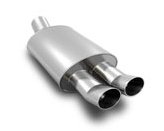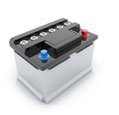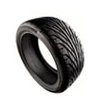Car Disposal - Maximizing the Benefits
1. Remove Electrical Sources - like BatteriesUnder current legislation car batteries cannot be sent to landfill sites without going through a prolonged clean up procedure. On arrival at the plants the battery casings are stripped and the plastic is granulated and reformed into new casings. The chemicals are separated; lead content is melted and reformed into new battery plates, which are then placed into new batteries. |
|
|
2. Drain Hazardous Chemicals- like Car FluidsThe disposal of fluids from end-of-life vehicles is a major issue, as the inappropriate treatment of fluids can be extremely damaging to the environment. Moreover, recycling fluids from scrap cars could also provide us with a valuable energy source. For example, it is estimated that waste oil from nearly 3 million car oil changes in the UK is not collected. If this was collected properly it could meet the annual energy needs of 1.5 million people. There are numerous types of fluids that can be removed from cars: for example engine oil, transmission oils, anti-freeze, hydraulic oils, fuel and suspension fluid. Most of the oil collected from end-of-life vehicles is processed, and burnt as a fuel in power stations or industry. First, they distil the oil to remove the water. After that, evaporation separates out the contaminants and additives. Finally, the oil is super-heated to re-infuse the hydrocarbon molecules with hydrogen atoms. Recycled oil can go through various other stages of processing, such as distillation, depending on its intended use. Hydraulic oils, such as brake fluid, should not be mixed with engine oil, but the process of recycling is similar. The oil is aerated and allowed to separate so that the excess water can be removed. It is then passed through a filter which removes contaminants, such as metal, dirt and silicon. Antifreeze can be recycled using specialist equipment. Chemicals are added which separate the additives, and the antifreeze is then passed through a filter that removes the old additives and any other debris which has accumulated. Finally, new additives are mixed in and green dye added, creating reusable antifreeze which will last for up to two years. |
|
|
3. Recycling Rubber- like TyresRubber recovery can be a difficult process but there are many reasons why rubber should be reclaimed; recovered rubber can cost half that of natural or synthetic rubber, it has some properties that are better than those of virgin rubber, producing rubber from recycling requires less energy in the total production process than virgin material, and it is an excellent way to dispose of unwanted rubber products. Under the European Landfill Directive whole tyres and shredded tyres can no longer be sent to landfill for disposal. Every day in Britain over 100,000 worn tyres are taken off cars, vans and trucks. This totals about 40 million tyres (440,000 tonnes) per year. About 70% of these tyres are diverted from landfill, 26% are reused as re-treads, 46% are reclaimed for other forms of reuse or recycling such as chemical recovery; the process of heating waste rubber reclaim, treating it with chemicals and then processing the rubber mechanically. Untreatable rubber is incinerated for 'energy recovery', which is a low-grade, undesirable option that cannot be achieved without pollution and contribution to climate change. The rest (28%) is landfilled or stockpiled, and represents a major waste problem. |
|


When working on scrap car disposal, maximising means considering a holistic approach to bring about a balanced positive impact to society
(our 'Total Solution'). Not only do we make great efforts to find the best price for your vehicle but we also strive to maximise the environmental impact as well.
When it comes to recycling cars, we don't just recycle the metal. We recycle as much of the car as we can to minimise the waste that ends up in landfill, and it also means that we generate more money for the customer. As well as the metal, we recycle the oil, plastic, glass, rubber, batteries, catalytic converters.








